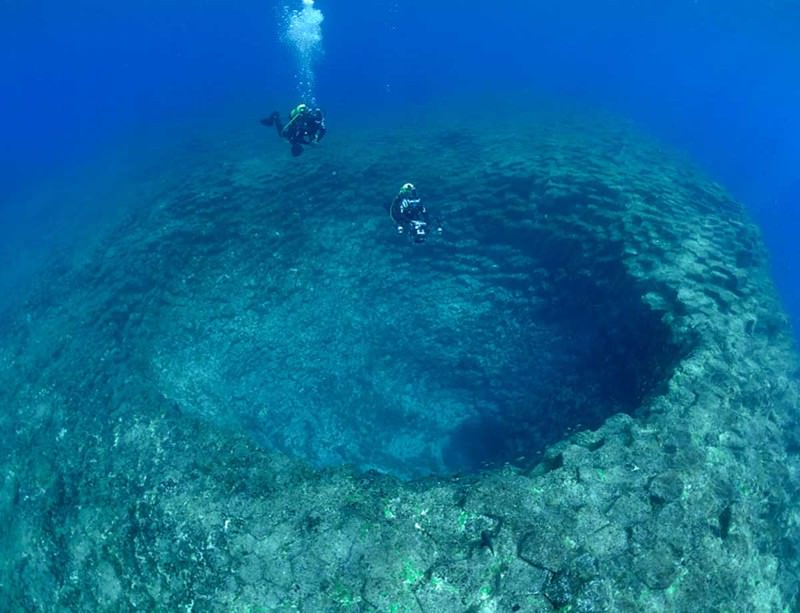A scientific expedition to explore life on undersea mountains – or seamounts – in the high seas south of Madagascar is under way.

The expedition is a key stage of a project aimed at the conservation and sustainable use of seamount ecosystems in the South West Indian Ocean, led by the International Union for Conservation of Nature (IUCN).
The three-week-long expedition aboard the French Polar Institute’s research vessel Marion Dufresne will explore the fauna of the Walters Shoal seamount.
This is the third IUCN expedition to explore seamounts, and the first to Walters Shoal.
While past expeditions concentrated solely on species inhabiting the seabed and the water, this one will gather extensive data on everything from plankton to seabirds and marine mammals to better understand how the seamount is linked to surrounding ecosystems.
The summit area of Walters shoal is said to be very shallow, thereby enabling scientists to dive on the seamount, observe and collect species by hand rather than relying on robots as they did during previous expeditions.
The expedition is to set out from Le Port, Reunion Island on Sunday, April 23, 2017. Planned arrival date in Durban, South Africa is May 18th, after three and a half weeks at sea. Scientists will spend around 19 days exploring the seamount.
The Walters Shoal is a group of submerged mountains in the Western Indian Ocean, on the Madagascar Ridge, 450 nautical miles south of Madagascar, 700 nautical miles east of South Africa.
Summits rising to at least 500m below the water surface extend over an area of 400km2. Maximum summit height is 4,750m – around 60m short of the Mont Blanc. The expedition will set out from Le Port, Reunion Island, and end in Durban, South Africa.
According to the IUCN, seamounts are home to many endemic, slow-growing, slow-reproducing species, and are highly vulnerable to intense fishing practices such as bottom trawling; both commercial and recreational fishing take place on Walters Shoal, including illegal fishing.
They have the potential to contribute to the development of new medicines through the use of marine genetic resources from the many unique species they support.
Scientists say seamounts play an important and only partially understood role in marine ecosystems well beyond the seamounts themselves; damage to seamounts could have widespread effects on ocean health and fisheries.
Fewer than 300 out of the world’s 200,000 seamounts have been explored so far, discloses the IUCN, adding that scientists will explore the fauna of the seamount and its role in the surrounding ecosystem.
It was gathered that they will also investigate the effects of unsustainable fishing practices and exploration for future deep sea mining on the seamount ecosystem.
Walters Shoal is said to have particularly shallow summits – some only 18 metres below the ocean surface – while the summits of seamounts are usually 1000-2000m below the surface; this will enable scientists to dive on the seamount rather than relying on subsea robots as during previous expeditions, allowing for hands-on data collection and better observation of marine life.
Like most seamounts, Walters Shoal lies within areas beyond national jurisdiction (ABNJ) – marine areas covered by fragmented legal frameworks which leave their biodiversity vulnerable to growing threats. By improving our understanding of seamount ecosystems, this project aims to inform on-going discussions towards an implementing agreement to the UN Convention on the Law of the Sea (UNCLOS).
Led by the IUCN under its Global Marine and Polar Programme, scientific project partners are Muséum National de l’Histoire Naturelle (MNHN), and Institut de Recherche pour le Développement (IRD). The vessel was chartered by the Institut Polaire Français (IPEV), while project financers are the Fonds Français pour l’Environnement Mondial.
François Simard, Deputy Director of IUCN’s Marine Programme, remarks: “Seamounts are islands of marine life with an important role in maintaining the health of the ocean. They contribute to food security by supporting fish stocks, and the unique species they harbour could provide genetic material for the development of future medicines. Yet they face increasing threats from unsustainable fishing and deep sea mining, and remain largely unexplored. We urgently need more research into these hotspots of marine biodiversity or we risk losing species that we didn’t even know existed.”
